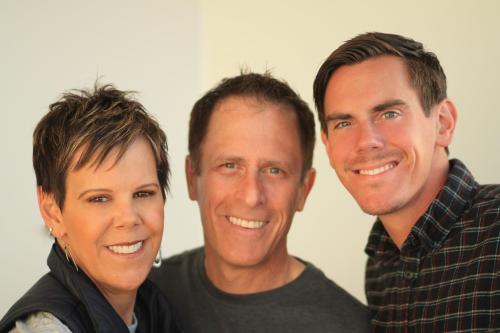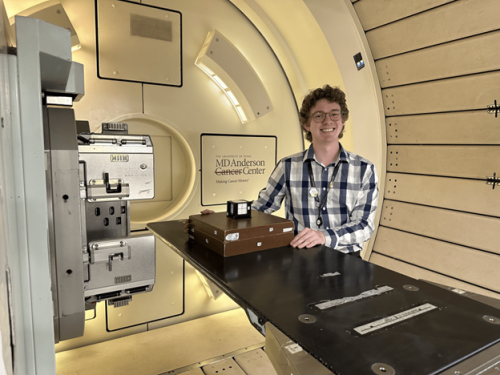
-
Understanding primary immunodeficiency (PI)

Understanding PI
The more you understand about primary immunodeficiency (PI), the better you can live with the disease or support others in your life with PI. Learn more about PI, including the various diagnoses and treatment options.
-
Living with PI
-
Addressing mental health
-
Explaining your diagnosis
- General care
- Get support
- For parents and guardians
-
Managing workplace issues
- Navigating insurance
-
Traveling safely

Living with PI
Living with primary immunodeficiency (PI) can be challenging, but you’re not alone—many people with PI lead full and active lives. With the right support and resources, you can, too.
-
Addressing mental health
-
Get involved

Get involved
Be a hero for those with PI. Change lives by promoting primary immunodeficiency (PI) awareness and taking action in your community through advocacy, donating, volunteering, or fundraising.
-
Advancing research and clinical care
-
Research Grant Program
-
Consulting immunologist
-
Diagnosing PI
-
Getting prior authorization
-
Clinician education
-
Survey research
-
Participating in clinical trials

Advancing research and clinical care
Whether you’re a clinician, researcher, or an individual with primary immunodeficiency (PI), IDF has resources to help you advance the field. Get details on surveys, grants, and clinical trials.
-
Research Grant Program
As a 9-year-old, Mits Morales fought a two-month-long battle with a severe lung infection caused by chronic granulomatous disease. He endured pneumonia, a collapsed lung, a coma, respiratory and heart attacks, and time on life support. Still, despite having gone through a life-threatening ordeal that left him with little energy, Mits had a thought on his mind that motivated him to get better with each passing day – he wanted to play soccer again.
And after a few months of recovery, he did just that.
“I went back to playing soccer and built up my endurance again. My endurance was completely gone. I couldn’t run as fast and as long as my teammates so I kept pushing myself to catch up to them because I didn’t want to sit off to the side and take a break when they could play for an hour and be fine,” said Mits.
“I motivated myself to play soccer, to close that gap because I didn’t want to be singled out and different.”
That drive to not allow CGD to interfere with his ambitions is a central part of Mits’ approach to life with a primary immunodeficiency. Mits said in school he chose to socialize with classmates, even though it was a risk to his own health. He never disclosed his condition to others, for fear they would think it was contagious.
“I wanted to be treated normally even though that meant being very close to them. They were actually a danger to me,” explained Mits.
As a young child, Mits had been quite healthy. Then, at age 9 he developed a cold that lasted for several months which grew into flu-like symptoms. His mother took him to the pediatrician over and over for treatment, but Mits just couldn’t shake the illness.
Finally, in late December 2007, when Mits’ fever climbed to 105 degrees, the pediatrician referred him to the emergency room in their small hometown in Utah. The next day an ambulance transported him to Primary Children’s Medical Center in Salt Lake City, Utah.
Five different medical specialists struggled to diagnose him, and only after a lung biopsy did they discover he has CGD. Because of the severe lung infection, doctors put Morales in a medically-induced coma and provided him life support through a heart and lung machine. Seriously ill, Mits suffered sudden cardiac arrest three times and doctors rushed to resuscitate him.
After two weeks in the coma, Mits’ condition stabilized. Doctors brought him out of the coma and removed the life support machine. Mits had to re-learn how to walk and eat, and he lost about 25 pounds. He also received white blood cell transfusions from his father and a family friend to help clear the infection. After 49 days in the hospital, doctors allowed Mits to return home.
Mits’ diagnosis showed that he is highly vulnerable to the bacteria nocardia, found in soil and water; the bacteria Burkholderia cepacia; and a fungus – all of which can cause lung infection in persons with CGD. Doctors prescribed 10 different oral medications, plus injections of interferon, to protect Mits from infection.
The combination of the illness and the medication left Mits exhausted at first. He recalls a vivid memory of returning to school in fourth grade shortly after his prolonged hospitalization. As he walked down the hallway one day to the lunchroom, a student accidentally brushed up against him. Mits lost his balance, fell, and could not find the strength to get up. He lay on the floor until help came. After that incident, the teacher assigned classmate “bodyguards” to walk with Mits when he traveled in the hallway.
“When I fell down I was embarrassed, but seeing that I felt cared for made me feel better,” reflects Mits.
Though Mits contended with bouts of pneumonia every two to three years “like clockwork,” he said, which inevitably required hospital stays of up to a week, he returned to soccer in fifth grade and dedicated himself to playing all throughout middle and high school.
“I went from not just wanting to be different but to wanting to be better for myself,” he said.
Mits gained a circle of support when he attended his first IDF event – the 2015 National Conference in New Orleans – at age 15. The experience inspired him to volunteer on the IDF Teen Council and Teen Escapes; attend more national and regional conferences; and participate in an IDF Advocacy Day. In these positions, he is able to encourage others along a similar journey.
At 21, Morales is now a young adult mentor.
“When I first went to an IDF conference, it blew my mind to meet the other kids. Every time I’d go, I’d meet 40 or 50 or 60 other kids,” said Mits. “I gained motivation from seeing them and I want to be that motivator for other kids.”
These days Mits is putting in long hours as a salesperson for the automotive industry and as an owner of a new real estate business. “I live and breathe work right now,” he said.
Mits reveals that as an adult he is much more open with others about having CGD, and doesn’t hesitate to inform employers. “I don’t want to have to walk on eggshells whenever I get hired.”.
When he’s not working, Mits enjoys time with wife Madison, whom he married in November 2019. Madison sometimes helps give Mits his weekly shots of interferon and reminds him to take his daily oral prophylaxis.
“She’s definitely very understanding and super helpful and takes care of me almost every day,” said Mits. “She’s a source of strength.”
Recently, Mits developed yet another case of pneumonia but “it wasn’t that bad,” he said because he only had to spend two days in the hospital. He continues to view CGD as a health issue to be addressed, but not one that will prevent him from moving forward in life.
“CGD has shaped me for the better. Whenever I have something go wrong, I remind myself I’ve had it worse because of what I went through and how good I have it now,” he concluded.
Related resources
Sign up for updates from IDF
Receive news and helpful resources to your cell phone or inbox. You can change or cancel your subscription at any time.





The Immune Deficiency Foundation improves the diagnosis, treatment, and quality of life for every person affected by primary immunodeficiency.
We foster a community that is connected, engaged, and empowered through advocacy, education, and research.
Combined Charity Campaign | CFC# 66309




